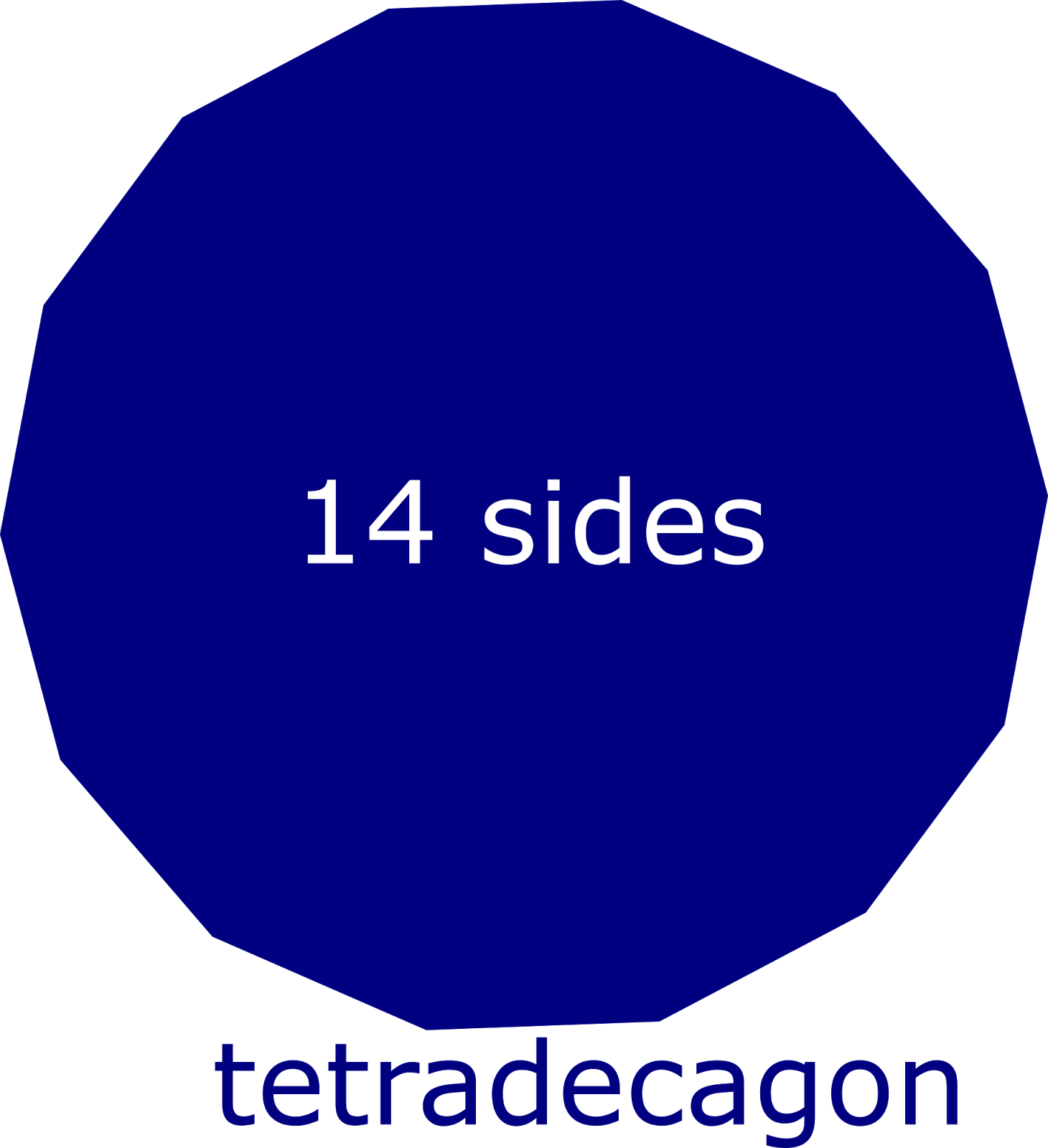A Fascinating Exploration Of A Shape With 14 Sides
In the world of geometry, shapes come in all forms and sizes, each with its unique properties and characteristics. One of the lesser-known shapes that piques the interest of mathematicians and enthusiasts alike is a shape with 14 sides, known as a tetradecagon. This intriguing polygon not only showcases the beauty of mathematics but also represents a rich area of study in geometry. Understanding the complexities of a shape with 14 sides can lead to numerous applications, from architectural designs to art and beyond. In this article, we will delve into the attributes, formulas, and significance of a tetradecagon, shedding light on why it deserves our attention.
Shapes, particularly polygons, have captivated thinkers for centuries, providing a visual representation of mathematical concepts. The tetradecagon, while not as commonly discussed as triangles or squares, offers a unique perspective on the structure and symmetry found in geometry. Its 14 sides and 14 angles create an array of mathematical relationships that can be both challenging and rewarding to explore.
In addition to its mathematical intrigue, a shape with 14 sides has practical applications in various fields, from design and architecture to engineering. Understanding its properties can enhance our ability to create and innovate, demonstrating that even the most complex shapes can have a profound impact on our everyday lives. Join us as we uncover the fascinating world of the tetradecagon and discover what makes this polygon so special.
What is a Tetradecagon?
The term "tetradecagon" is derived from the Greek words "tetradeca," meaning fourteen, and "gon," meaning angle. Therefore, a tetradecagon is a polygon with 14 sides and 14 angles. It can exist in both regular and irregular forms. A regular tetradecagon has equal sides and angles, while an irregular one may vary in length and angle measurements. This distinction is essential when analyzing the properties of the shape.
How is a Tetradecagon Constructed?
To construct a regular tetradecagon, one can follow specific geometric methods or use tools like a compass and ruler. Here are the general steps to create a regular tetradecagon:
- Begin with a circle, which will serve as the circumcircle for the tetradecagon.
- Divide the circle into 14 equal arcs, each representing one side of the polygon.
- Mark the points where the arcs intersect the circle.
- Connect these points to form the tetradecagon.
What Are the Properties of a Tetradecagon?
A shape with 14 sides has several unique properties that are vital for understanding its behavior in geometric contexts:
- Interior Angles: The sum of the interior angles of a tetradecagon can be calculated using the formula (n-2) × 180, where n is the number of sides. For a tetradecagon, this equals 2160 degrees.
- Exterior Angles: The sum of the exterior angles of any polygon is always 360 degrees. Thus, each exterior angle of a regular tetradecagon measures approximately 25.71 degrees.
- Symmetry: A regular tetradecagon possesses 14 lines of symmetry and rotational symmetry of order 14.
- Area: The area of a regular tetradecagon can be calculated using the formula: Area = 7 × (side length)^2 / (4 × tan(π/14)).
What Are the Applications of a Tetradecagon?
Understanding a shape with 14 sides goes beyond theoretical mathematics; it has practical applications in various fields. Some of the notable applications include:
- Architecture: Architects often utilize complex polygons, including tetradecagons, in their designs to achieve aesthetic appeal and structural integrity.
- Art: Artists frequently draw inspiration from geometric shapes, and the symmetry of a tetradecagon can add a captivating element to their work.
- Engineering: Engineers may employ tetradecagons in designing components that require specific load distributions due to their unique geometric properties.
How Does a Tetradecagon Compare to Other Polygons?
When examining a shape with 14 sides, it is insightful to compare it with other polygons. Here are some comparisons:
- Triangle: A triangle has 3 sides and is the simplest polygon, while a tetradecagon, with its 14 sides, presents more complexity.
- Hexagon: A regular hexagon has 6 sides and is often found in nature, such as in honeycomb structures, while the tetradecagon is less common.
- Dodecagon: A dodecagon has 12 sides and serves as a bridge between simpler polygons and the tetradecagon, which requires more advanced geometric understanding.
What Mathematical Formulas are Related to a Tetradecagon?
In addition to the area and angle formulas previously mentioned, several other mathematical concepts can be applied to a shape with 14 sides:
- Perimeter: The perimeter of a regular tetradecagon can be calculated by multiplying the length of one side by 14.
- Diagonals: The number of diagonals in a tetradecagon can be determined using the formula: n(n-3)/2, which results in 77 diagonals.
Can a Tetradecagon Be Found in Nature?
While tetradecagons may not be as prevalent in nature as other shapes, they can still be observed in some contexts. Mathematical patterns and structures often emerge in natural forms, from plant growth to crystal formations. Understanding these geometric principles can enhance our appreciation for the world around us.
Is There a Historical Significance to the Tetradecagon?
The study of polygons, including the tetradecagon, has historical roots in ancient civilizations. Early mathematicians explored shapes and their properties, laying the groundwork for modern geometry. The tetradecagon’s role in this mathematical evolution reflects the ongoing fascination with polygons throughout history.
Conclusion: Why Should We Care About a Shape with 14 Sides?
A shape with 14 sides, or tetradecagon, may seem like a niche topic in the vast field of geometry, but its significance extends far beyond mere academic interest. From its mathematical properties to its applications in art, architecture, and engineering, understanding the tetradecagon enhances our appreciation of the world of shapes. By exploring the complexities of this polygon, we can unlock new insights into the mathematical structures that surround us every day.
Article Recommendations


